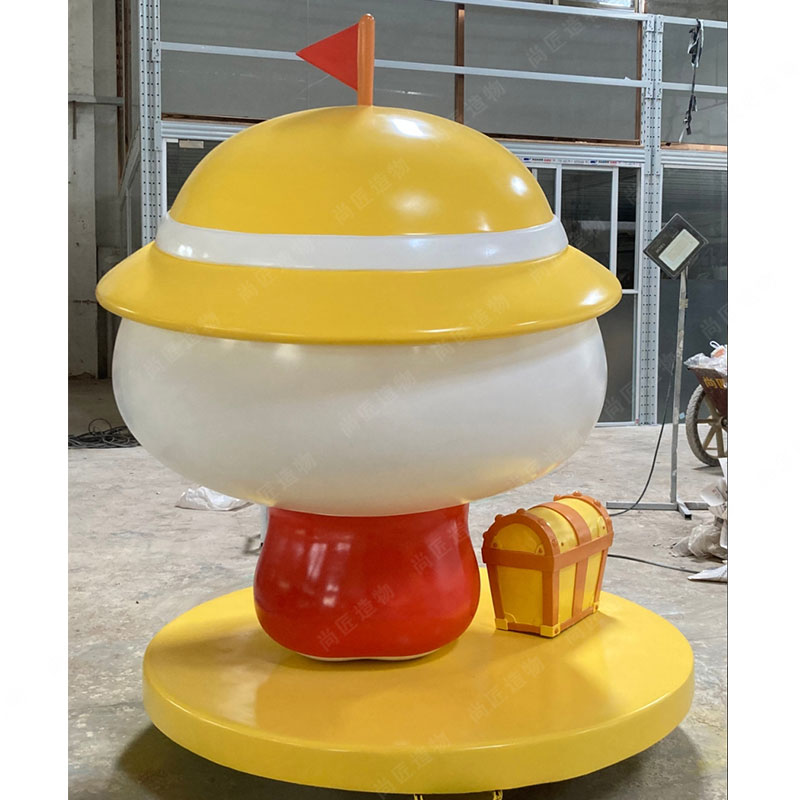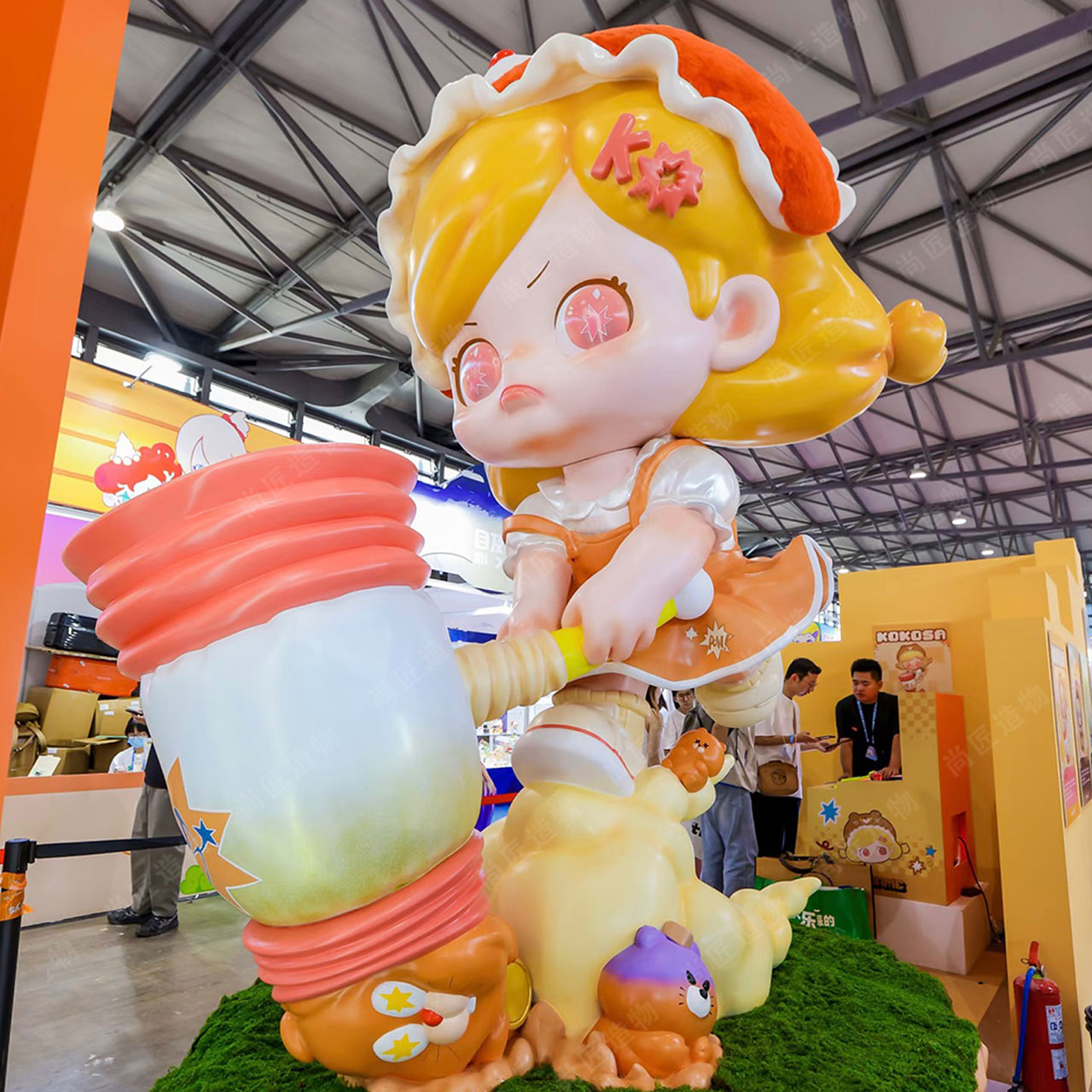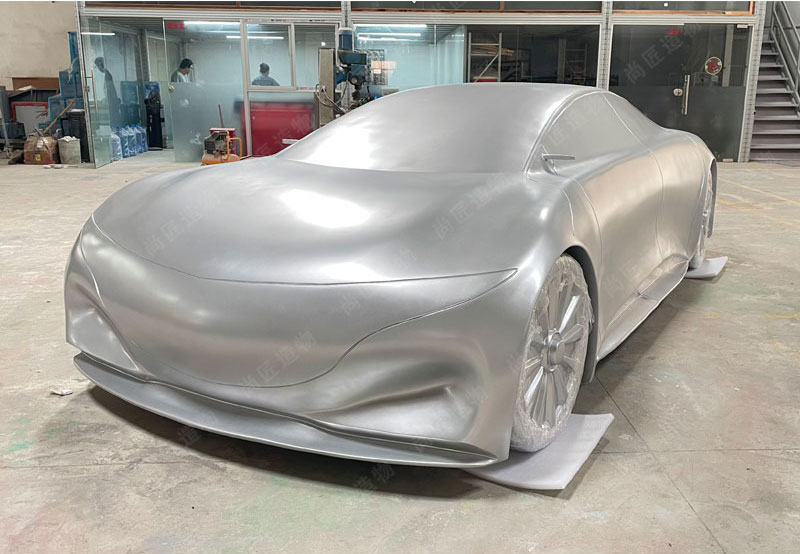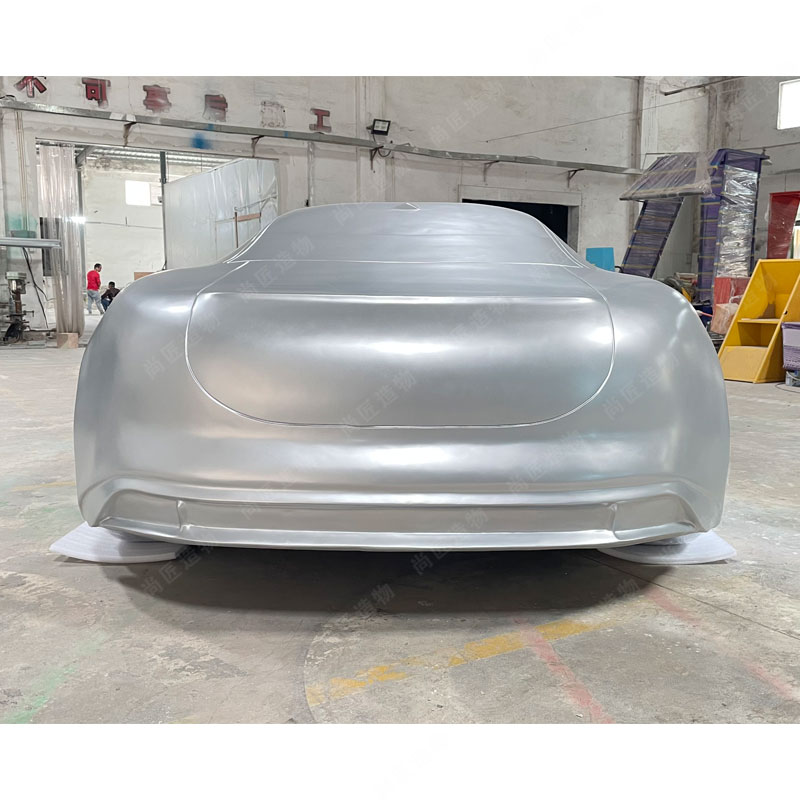Fiberglass sculptures stand out for their lightweight and durable attributes, making them an excellent choice for diverse applications. The material's unique composition ensures that these artworks endure various environmental conditions while retaining their aesthetic appeal. Their design flexibility allows artists to explore creative details and intricate forms without the limitations associated with traditional materials. Additionally, fiberglass's resistance to weathering and low maintenance requirements enhance its practicality for both indoor and outdoor installations. As a result, fiberglass sculptures not only showcase artistic talent but also meet the demands of longevity and ease of use in various settings.
Understanding the Composition of Fiberglass Sculptures
Fiberglass sculptures are crafted from a combination of fine glass fibers and resin, which together create a robust yet lightweight material. The glass fibers give the sculpture its strength, while the resin acts as a binding agent, ensuring that the fibers remain tightly woven. This unique composition allows fiberglass statues to withstand various environmental conditions, making them suitable for both indoor and outdoor displays. Additionally, artists can easily mold and shape fiberglass into intricate designs, providing versatility in artistic expression. The lightweight nature of these sculptures not only makes transportation effortless but also simplifies installation in various settings. Whether adorning a garden or enhancing an interior space, fiberglass sculptures represent an innovative approach to modern art. For those interested in diverse shapes and styles, explore options like Cartoon sculpturethat showcase the potential of this material.

The Craftsmanship Behind Lightweight Durable Statues
Crafting lightweight durable fiberglass statues requires a blend of skilled artistry and innovative techniques. Fiberglass, made from fine strands of glass woven into a resin base, allows artists to create intricate designs without unnecessary weight. The layering process involves applying resin to a mold, which forms the core structure of the statue. This method not only ensures durability but also enhances the details, making the final product strikingly lifelike.
"The beauty of fiberglass is its ability to mimic more traditional materials while offering significant advantages in weight and resilience."
Artisans often use various textures and finishes to enhance the visual appeal. By integrating pigments into the resin, creators can achieve vibrant colors that resist fading from environmental factors. Furthermore, the versatility of fiberglass allows for creative freedom in crafting both abstract and realistic forms, making it a preferred choice for sculptors.
| Feature | Fiberglass Statues | Traditional Materials |
|---|---|---|
| Weight | Lightweight | Heavier |
| Durability | High Resistance | Variable Durability |
| Maintenance | Low Maintenance Needs | Higher Maintenance Required |
| Design Flexibility | Highly Versatile | Limited by Material |
Overall, the craftsmanship behind fiberglass statues supports both artistic expression and practical functionality, making them suitable for various settings while meeting aesthetic demands.
Advantages of Choosing Fiberglass for Sculptures
Fiberglass offers several advantages that make it a popular choice for sculptures. One of the primary benefits is its lightweight nature, which makes installation and transportation easier compared to traditional materials like stone or metal. This weight advantage also allows artists to create larger pieces without compromising structural integrity. Moreover, fiberglass is highly durable and resistant to weather conditions, ensuring that outdoor sculptures maintain their appearance over time. Its ability to withstand the elements makes it suitable for various environments, from gardens to public parks. Additionally, fiberglass can be easily molded into intricate designs, providing artists with creative flexibility while keeping costs lower than other materials. This durability paired with design versatility makes fiberglass a practical option for both creators and collectors alike.

Exploring the Durability of Lightweight Fiberglass Art
Fiberglass sculptures stand out for their impressive durability, making them an ideal choice for various environments. The material is resistant to weathering, ensuring that sculptures maintain their appearance, even in harsh conditions. Unlike traditional materials, fiberglass does not chip or crack easily, which extends the lifespan of these artworks considerably. Additionally, the lightweight nature of fiberglass allows for easy transportation and installation, reducing the risk of damage during handling. Furthermore, fiberglass can be treated with protective coatings that enhance its resilience against UV rays and moisture, further sustaining its vibrant colors and structural integrity over time. This unique combination of attributes makes fiberglass an excellent option for artists and collectors seeking longevity in their creations.
How Fiberglass Statues Blend Aesthetics with Practicality
Fiberglass statues serve as a perfect union of beauty and functionality. Their sleek designs provide an artistic appeal that enhances any environment, be it a garden, park, or modern interior. The lightweight nature of fiberglass allows for easy relocation and installation, making it a practical choice for outdoor displays. Unlike traditional materials, these statues resist weather damage and fading, ensuring that their visual allure lasts over time. By incorporating various finishes and colors, artists can craft pieces that resonate with diverse tastes while maintaining the robust qualities of fiberglass. This combination underscores why many are choosing Fiberglass sculptureas a preferred choice in both residential and commercial settings.

Why Fiberglass is Ideal for Outdoor Sculptures
Fiberglass is particularly suited for outdoor sculptures due to its lightweight nature and remarkable resistance to environmental elements. Unlike traditional materials, fiberglass does not corrode or degrade under exposure to moisture, UV rays, or temperature fluctuations. This resilience allows sculptures to maintain their original appearance over time without significant wear. Furthermore, the ease of installation with fiberglass pieces means they can be elegantly displayed in gardens, parks, or any outdoor setting without the need for extensive support structures. The versatility in design also enables artists to create intricate details that enhance visual appeal while ensuring durability. For those exploring alternatives, Stainless steel sculptureoffers a distinct option with its own unique benefits.
Comparing Materials: Fiberglass vs. Traditional Sculpture Media
When comparing fiberglass to traditional sculpture materials like stone, metal, or ceramics, several key differences emerge. Fiberglass sculptures are lighter, making them easier to handle and transport. Unlike heavier materials that require cranes or specialized equipment for installation, fiberglass can be conveniently moved and positioned without extensive assistance. Additionally, fiberglass is often molded with precision, allowing for more intricate details and designs that can be challenging to achieve with traditional materials. In terms of durability, fiberglass is resistant to weathering and corrosion, unlike metal that may rust or stone that can chip over time. This resilience makes fiberglass an ideal choice for outdoor installations. Furthermore, the versatility of fiberglass allows artists to incorporate various finishes and textures, enhancing visual appeal while maintaining practicality. For those interested in exploring various artistic expressions through mediums like bronze or stone, realistic sculptures can also add depth to any space by capturing lifelike features while benefiting from the advantages offered by modern materials like fiberglass. For more details on such art forms, check out Realistic sculpture.

The Evolution of Lightweight Durable Statue Design
Over the years, the design of lightweight durable statues has transformed significantly. Initially, sculptors relied heavily on traditional materials like stone and metal, which, while timeless, posed challenges due to their weight and fragility. The introduction of fiberglass revolutionized this field. With advancements in technology and materials science, artists began to embrace fiberglass for its exceptional strength-to-weight ratio. Modern designs now take advantage of fiberglass's versatility, allowing for more intricate shapes and larger installations that are still easy to transport and install. Today’s fiberglass statues maintain aesthetic appeal while offering practicality in various environments, making them popular choices for both indoor and outdoor displays. This evolution reflects a growing demand for art that is not only beautiful but also functional and resilient.

Conclusion
In conclusion, fiberglass sculptures provide a dynamic blend of artistry and functionality that appeals to both creators and collectors. Their lightweight nature allows for effortless transport and installation, while their durability ensures that they can withstand diverse environmental conditions without compromising aesthetics. The versatility of fiberglass enables artists to explore intricate designs and vibrant finishes, enhancing the visual experience in any setting. As the popularity of fiberglass continues to rise, it opens new pathways for innovative expression in sculpture, bridging the gap between traditional artistry and modern technological advancements.
FAQs
What makes fiberglass statues weather-resistant?
Fiberglass is designed to resist moisture, UV rays, and temperature fluctuations, which helps maintain its appearance over time.
Are fiberglass sculptures difficult to transport?
No, fiberglass sculptures are lightweight, making them easy to carry and install without specialized equipment.
How do fiberglass sculptures compare to traditional materials in terms of durability?
Fiberglass statues are less prone to chipping or cracking compared to stone or metal, extending their lifespan significantly.
Can fiberglass be molded into intricate designs?
Yes, the versatility of fiberglass allows artists to create detailed and complex shapes that may be challenging with traditional materials.
What kind of maintenance do fiberglass statues require?
Fiberglass sculptures typically require low maintenance due to their durability and resistance to environmental wear.
 ch
ch English
English





